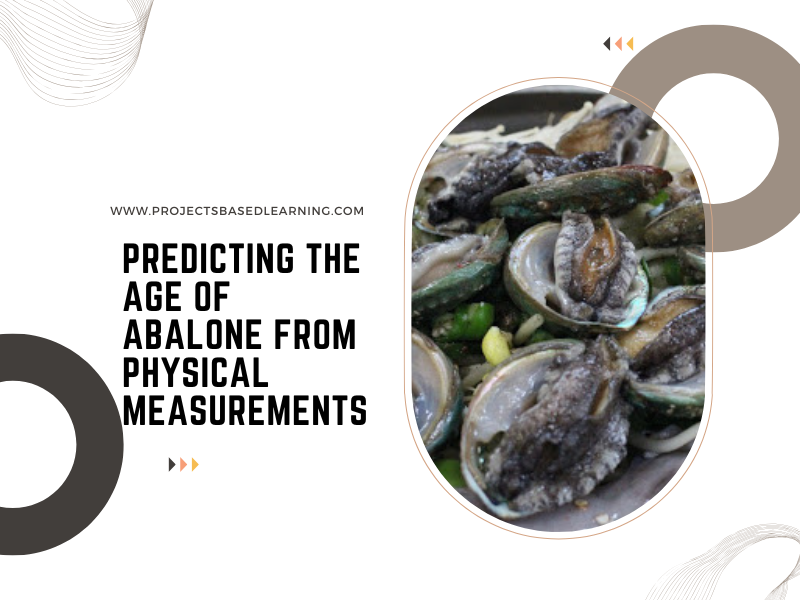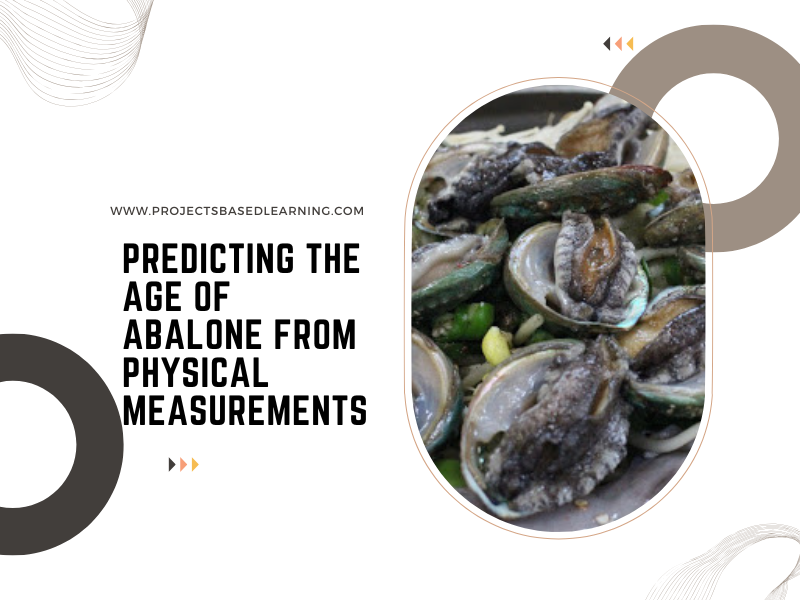Collecting all String Columns into an Array
%scala
var StringfeatureCol = Array("class", "capshape", "capsurface", "capcolor", "bruises", "odor", "gillattachment", "gillspacing", "gillsize", "gillcolor", "stalkshape", "stalkroot", "stalksurfaceabovering", "stalksurfacebelowring", "stalkcolorabovering", "stalkcolorbelowring", "veiltype", "veilcolor", "ringnumber", "ringtype", "sporeprintcolor", "population", "habitat")StringIndexer encodes a string column of labels to a column of label indices.
Example of StringIndexer
%scala
import org.apache.spark.ml.feature.StringIndexer
val df = spark.createDataFrame(
Seq((0, "a"), (1, "b"), (2, "c"), (3, "a"), (4, "a"), (5, "c"))
).toDF("id", "category")
df.show()
val indexer = new StringIndexer()
.setInputCol("category")
.setOutputCol("categoryIndex")
val indexed = indexer.fit(df).transform(df)
indexed.show()
Output:
+---+--------+
| id|category|
+---+--------+
| 0| a|
| 1| b|
| 2| c|
| 3| a|
| 4| a|
| 5| c|
+---+--------+
+---+--------+-------------+
| id|category|categoryIndex|
+---+--------+-------------+
| 0| a| 0.0|
| 1| b| 2.0|
| 2| c| 1.0|
| 3| a| 0.0|
| 4| a| 0.0|
| 5| c| 1.0|
+---+--------+-------------+Define the Pipeline
A predictive model often requires multiple stages of feature preparation.
A pipeline consists of a series of transformer and estimator stages that typically prepare a DataFrame for modeling and then train a predictive model.
In this case, you will create a pipeline with stages:
- A StringIndexer estimator that converts string values to indexes for categorical features
- A VectorAssembler that combines categorical features into a single vector
%scala
import org.apache.spark.ml.attribute.Attribute
import org.apache.spark.ml.feature.{IndexToString, StringIndexer}
import org.apache.spark.ml.{Pipeline, PipelineModel}
val indexers = StringfeatureCol.map { colName =>
new StringIndexer().setInputCol(colName).setOutputCol(colName + "_indexed")
}
val pipeline = new Pipeline()
.setStages(indexers)
val mushroomDF = pipeline.fit(mushroom).transform(mushroom)Print Schema to view String Columns are converted into equivalent Numerical Columns
%scala mushroomDF.printSchema() root |-- class: string (nullable = true) |-- capshape: string (nullable = true) |-- capsurface: string (nullable = true) |-- capcolor: string (nullable = true) |-- bruises: string (nullable = true) |-- odor: string (nullable = true) |-- gillattachment: string (nullable = true) |-- gillspacing: string (nullable = true) |-- gillsize: string (nullable = true) |-- gillcolor: string (nullable = true) |-- stalkshape: string (nullable = true) |-- stalkroot: string (nullable = true) |-- stalksurfaceabovering: string (nullable = true) |-- stalksurfacebelowring: string (nullable = true) |-- stalkcolorabovering: string (nullable = true) |-- stalkcolorbelowring: string (nullable = true) |-- veiltype: string (nullable = true) |-- veilcolor: string (nullable = true) |-- ringnumber: string (nullable = true) |-- ringtype: string (nullable = true) |-- sporeprintcolor: string (nullable = true) |-- population: string (nullable = true) |-- habitat: string (nullable = true) |-- class_indexed: double (nullable = false) |-- capshape_indexed: double (nullable = false) |-- capsurface_indexed: double (nullable = false) |-- capcolor_indexed: double (nullable = false) |-- bruises_indexed: double (nullable = false) |-- odor_indexed: double (nullable = false) |-- gillattachment_indexed: double (nullable = false) |-- gillspacing_indexed: double (nullable = false) |-- gillsize_indexed: double (nullable = false) |-- gillcolor_indexed: double (nullable = false) |-- stalkshape_indexed: double (nullable = false) |-- stalkroot_indexed: double (nullable = false) |-- stalksurfaceabovering_indexed: double (nullable = false) |-- stalksurfacebelowring_indexed: double (nullable = false) |-- stalkcolorabovering_indexed: double (nullable = false) |-- stalkcolorbelowring_indexed: double (nullable = false) |-- veiltype_indexed: double (nullable = false) |-- veilcolor_indexed: double (nullable = false) |-- ringnumber_indexed: double (nullable = false) |-- ringtype_indexed: double (nullable = false) |-- sporeprintcolor_indexed: double (nullable = false) |-- population_indexed: double (nullable = false) |-- habitat_indexed: double (nullable = false)
Display Data

Split the Data
It is common practice when building machine learning models to split the source data, using some of it to train the model and reserving some to test the trained model. In this project, you will use 70% of the data for training, and reserve 30% for testing.
%scala
val splits = mushroomDF.randomSplit(Array(0.7, 0.3))
val train = splits(0)
val test = splits(1)
val train_rows = train.count()
val test_rows = test.count()
println("Training Rows: " + train_rows + " Testing Rows: " + test_rows)Prepare the Training Data
To train the Classification model, you need a training data set that includes a vector of numeric features, and a label column. In this project, you will use the VectorAssembler class to transform the feature columns into a vector, and then rename the ClickedonAd column to the label.
VectorAssembler()
VectorAssembler(): is a transformer that combines a given list of columns into a single vector column. It is useful for combining raw features and features generated by different feature transformers into a single feature vector, in order to train ML models like logistic regression and decision trees.
VectorAssembler accepts the following input column types: all numeric types, boolean type, and vector type.
In each row, the values of the input columns will be concatenated into a vector in the specified order.
%scala
import org.apache.spark.sql.functions._
import org.apache.spark.sql.Row
import org.apache.spark.sql.types._
import org.apache.spark.ml.classification.LogisticRegression
import org.apache.spark.ml.feature.VectorAssembler
val assembler = new VectorAssembler().setInputCols(Array("capshape_indexed", "capsurface_indexed", "capcolor_indexed", "bruises_indexed", "odor_indexed",
"gillattachment_indexed", "gillspacing_indexed", "gillsize_indexed", "gillcolor_indexed", "stalkshape_indexed", "stalkroot_indexed",
"stalksurfaceabovering_indexed", "stalksurfacebelowring_indexed", "stalkcolorabovering_indexed", "stalkcolorbelowring_indexed",
"veiltype_indexed", "veilcolor_indexed", "ringnumber_indexed", "ringtype_indexed", "sporeprintcolor_indexed", "population_indexed", "habitat_indexed")).setOutputCol("features")
val training = assembler.transform(train).select($"features", $"class_indexed".alias("label"))
training.show(false)
Output
+--------------------------------------------------------------------------------------+-----+
|features |label|
+--------------------------------------------------------------------------------------+-----+
|(22,[0,1,2,6,8,9,10,11,12,17,20,21],[3.0,2.0,1.0,1.0,4.0,1.0,1.0,1.0,1.0,1.0,3.0,1.0])|0.0 |
|(22,[0,1,2,6,8,9,10,11,17,20,21],[3.0,2.0,1.0,1.0,4.0,1.0,1.0,1.0,1.0,2.0,1.0]) |0.0 |
|(22,[0,1,2,6,8,9,10,12,17,20,21],[3.0,2.0,1.0,1.0,4.0,1.0,1.0,1.0,1.0,3.0,1.0]) |0.0 |
|(22,[0,1,2,6,8,9,10,17,20,21],[3.0,2.0,1.0,1.0,4.0,1.0,1.0,1.0,3.0,1.0]) |0.0 |
|(22,[0,1,2,6,8,9,10,17,20,21],[3.0,2.0,1.0,1.0,4.0,1.0,1.0,1.0,2.0,1.0]) |0.0 |
|(22,[0,1,2,6,8,9,10,11,17,20,21],[3.0,2.0,1.0,1.0,1.0,1.0,1.0,1.0,1.0,3.0,1.0]) |0.0 |
|(22,[0,1,2,6,8,9,10,12,17,20,21],[3.0,2.0,1.0,1.0,1.0,1.0,1.0,1.0,1.0,3.0,1.0]) |0.0 |
|(22,[0,1,2,6,8,9,10,12,17,20,21],[3.0,2.0,1.0,1.0,1.0,1.0,1.0,1.0,1.0,2.0,1.0]) |0.0 |
|(22,[0,1,2,6,8,9,10,17,20,21],[3.0,2.0,1.0,1.0,1.0,1.0,1.0,1.0,3.0,1.0]) |0.0 |
|(22,[0,1,2,6,8,9,10,17,20,21],[3.0,2.0,1.0,1.0,1.0,1.0,1.0,1.0,2.0,1.0]) |0.0 |
|(22,[0,1,2,6,8,9,10,11,12,17,20,21],[3.0,2.0,1.0,1.0,2.0,1.0,1.0,1.0,1.0,1.0,3.0,1.0])|0.0 |
|(22,[0,1,2,6,8,9,10,11,12,17,20,21],[3.0,2.0,1.0,1.0,2.0,1.0,1.0,1.0,1.0,1.0,2.0,1.0])|0.0 |
|(22,[0,1,2,6,8,9,10,11,17,20,21],[3.0,2.0,1.0,1.0,2.0,1.0,1.0,1.0,1.0,3.0,1.0]) |0.0 |
|(22,[0,1,2,6,8,9,10,11,17,20,21],[3.0,2.0,1.0,1.0,2.0,1.0,1.0,1.0,1.0,2.0,1.0]) |0.0 |
|(22,[0,1,2,6,8,9,10,12,17,20,21],[3.0,2.0,1.0,1.0,2.0,1.0,1.0,1.0,1.0,3.0,1.0]) |0.0 |
|(22,[0,1,2,6,8,9,10,17,20,21],[3.0,2.0,1.0,1.0,2.0,1.0,1.0,1.0,2.0,1.0]) |0.0 |
|(22,[0,1,2,6,8,9,10,11,12,17,20,21],[3.0,2.0,4.0,1.0,4.0,1.0,1.0,1.0,1.0,1.0,3.0,1.0])|0.0 |
|(22,[0,1,2,6,8,9,10,11,12,17,20,21],[3.0,2.0,4.0,1.0,4.0,1.0,1.0,1.0,1.0,1.0,2.0,1.0])|0.0 |
|(22,[0,1,2,6,8,9,10,11,17,20,21],[3.0,2.0,4.0,1.0,4.0,1.0,1.0,1.0,1.0,3.0,1.0]) |0.0 |
|(22,[0,1,2,6,8,9,10,11,17,20,21],[3.0,2.0,4.0,1.0,4.0,1.0,1.0,1.0,1.0,2.0,1.0]) |0.0 |
+--------------------------------------------------------------------------------------+-----+
only showing top 20 rowsTrain a Classification Model
Next, you need to train a Classification model using the training data. To do this, create an instance of the LogisticRegression algorithm you want to use and use its fit method to train a model based on the training DataFrame. In this project, you will use a Logistic Regression Classifier algorithm – though you can use the same technique for any of the regression algorithms supported in the spark.ml API
%scala
import org.apache.spark.ml.classification.LogisticRegression
val lr = new LogisticRegression().setLabelCol("label").setFeaturesCol("features").setMaxIter(10).setRegParam(0.3)
val model = lr.fit(training)
println("Model Trained!")Prepare the Testing Data
Now that you have a trained model, you can test it using the testing data you reserved previously. First, you need to prepare the testing data in the same way as you did the training data by transforming the feature columns into a vector. This time you’ll rename the class column to trueLabel.
%scala
val testing = assembler.transform(test).select($"features", $"class_indexed".alias("trueLabel"))
testing.show()
Output:
+--------------------+---------+
| features|trueLabel|
+--------------------+---------+
|(22,[0,1,2,6,8,9,...| 0.0|
|(22,[0,1,2,6,8,9,...| 0.0|
|(22,[0,1,2,6,8,9,...| 0.0|
|(22,[0,1,2,6,8,9,...| 0.0|
|(22,[0,1,2,6,8,9,...| 0.0|
|(22,[0,1,2,6,8,9,...| 0.0|
|(22,[0,1,2,6,8,9,...| 0.0|
|(22,[0,1,2,6,8,9,...| 0.0|
|(22,[0,1,2,6,8,9,...| 0.0|
|(22,[0,1,2,6,8,9,...| 0.0|
|(22,[0,1,2,6,8,9,...| 0.0|
|(22,[0,1,2,6,8,9,...| 0.0|
|(22,[0,1,2,6,8,9,...| 0.0|
|(22,[0,1,2,6,8,9,...| 0.0|
|(22,[0,1,2,6,8,9,...| 0.0|
|(22,[0,1,2,6,8,9,...| 0.0|
|(22,[0,1,2,6,8,9,...| 0.0|
|(22,[0,1,2,6,8,9,...| 0.0|
|(22,[0,1,2,6,8,9,...| 0.0|
|(22,[0,1,2,6,8,9,...| 0.0|
+--------------------+---------+
only showing top 20 rowsTest the Model
Now you’re ready to use the transform method of the model to generate some predictions. You can use this approach to predict the class; but in this case, you are using the test data which includes a known true label value, so you can compare the Class
%scala
%scala
val prediction = model.transform(testing)
val predicted = prediction.select("features", "prediction", "trueLabel")
predicted.show()
Output:
+--------------------+----------+---------+
| features|prediction|trueLabel|
+--------------------+----------+---------+
|(22,[0,1,2,6,8,9,...| 0.0| 0.0|
|(22,[0,1,2,6,8,9,...| 0.0| 0.0|
|(22,[0,1,2,6,8,9,...| 0.0| 0.0|
|(22,[0,1,2,6,8,9,...| 0.0| 0.0|
|(22,[0,1,2,6,8,9,...| 0.0| 0.0|
|(22,[0,1,2,6,8,9,...| 0.0| 0.0|
|(22,[0,1,2,6,8,9,...| 0.0| 0.0|
|(22,[0,1,2,6,8,9,...| 0.0| 0.0|
|(22,[0,1,2,6,8,9,...| 0.0| 0.0|
|(22,[0,1,2,6,8,9,...| 0.0| 0.0|
|(22,[0,1,2,6,8,9,...| 0.0| 0.0|
|(22,[0,1,2,6,8,9,...| 0.0| 0.0|
|(22,[0,1,2,6,8,9,...| 0.0| 0.0|
|(22,[0,1,2,6,8,9,...| 0.0| 0.0|
|(22,[0,1,2,6,8,9,...| 0.0| 0.0|
|(22,[0,1,2,6,8,9,...| 0.0| 0.0|
|(22,[0,1,2,6,8,9,...| 0.0| 0.0|
|(22,[0,1,2,6,8,9,...| 0.0| 0.0|
|(22,[0,1,2,6,8,9,...| 0.0| 0.0|
|(22,[0,1,2,6,8,9,...| 0.0| 0.0|
|(22,[0,1,2,6,8,9,...| 0.0| 0.0|
|(22,[0,1,2,6,8,9,...| 0.0| 0.0|
|(22,[0,1,2,6,8,9,...| 0.0| 0.0|
|(22,[0,1,2,6,8,9,...| 0.0| 0.0|
|(22,[0,1,2,6,8,9,...| 0.0| 0.0|
|(22,[0,1,2,6,8,9,...| 0.0| 0.0|
|(22,[0,1,2,6,8,9,...| 0.0| 0.0|
|(22,[0,1,5,8,9,10...| 0.0| 0.0|
|(22,[0,1,5,8,9,10...| 0.0| 0.0|
|(22,[0,1,5,8,9,10...| 0.0| 0.0|
|(22,[0,1,5,8,9,10...| 0.0| 0.0|
|(22,[0,1,5,8,9,10...| 0.0| 0.0|
|(22,[0,1,5,8,9,10...| 0.0| 0.0|
|(22,[0,1,5,8,9,10...| 0.0| 0.0|
|(22,[0,1,5,8,9,10...| 0.0| 0.0|
|(22,[0,1,5,8,9,10...| 0.0| 0.0|
|(22,[0,1,5,8,9,10...| 0.0| 0.0|
|(22,[0,1,5,8,9,10...| 0.0| 0.0|
|(22,[0,1,5,8,9,10...| 0.0| 0.0|
+--------------------+----------+---------+ Evaluating a Model (We got 97% Accuracy)
%scala
import org.apache.spark.ml.evaluation.BinaryClassificationEvaluator
val evaluator = new BinaryClassificationEvaluator().setLabelCol("trueLabel").setRawPredictionCol("rawPrediction").setMetricName("areaUnderROC")
val auc = evaluator.evaluate(prediction)
println("AUC = " + (auc))
Output:
AUC = 0.9739827185870374
import org.apache.spark.ml.evaluation.BinaryClassificationEvaluator
evaluator: org.apache.spark.ml.evaluation.BinaryClassificationEvaluator = BinaryClassificationEvaluator: uid=binEval_7c586b29a6e6, metricName=areaUnderROC, numBins=1000
auc: Double = 0.9739827185870374
Trying a Different Classification Model
We will use Decision Tree Classification
%scala
import org.apache.spark.ml.classification.DecisionTreeClassificationModel
import org.apache.spark.ml.classification.DecisionTreeClassifier
import org.apache.spark.ml.evaluation.MulticlassClassificationEvaluator
val dt = new DecisionTreeClassifier().setLabelCol("label").setFeaturesCol("features")
val model = dt.fit(training)
println("Model Trained!")Testing Decision Tree Classification model
%scala
val prediction = model.transform(testing)
val predicted = prediction.select("features", "prediction", "trueLabel")
predicted.show()
Output:
+--------------------+----------+---------+
| features|prediction|trueLabel|
+--------------------+----------+---------+
|(22,[0,1,2,6,8,9,...| 0.0| 0.0|
|(22,[0,1,2,6,8,9,...| 0.0| 0.0|
|(22,[0,1,2,6,8,9,...| 0.0| 0.0|
|(22,[0,1,2,6,8,9,...| 0.0| 0.0|
|(22,[0,1,2,6,8,9,...| 0.0| 0.0|
|(22,[0,1,2,6,8,9,...| 0.0| 0.0|
|(22,[0,1,2,6,8,9,...| 0.0| 0.0|
|(22,[0,1,2,6,8,9,...| 0.0| 0.0|
|(22,[0,1,2,6,8,9,...| 0.0| 0.0|
|(22,[0,1,2,6,8,9,...| 0.0| 0.0|
|(22,[0,1,2,6,8,9,...| 0.0| 0.0|
|(22,[0,1,2,6,8,9,...| 0.0| 0.0|
|(22,[0,1,2,6,8,9,...| 0.0| 0.0|
|(22,[0,1,2,6,8,9,...| 0.0| 0.0|
|(22,[0,1,2,6,8,9,...| 0.0| 0.0|
|(22,[0,1,2,6,8,9,...| 0.0| 0.0|
+--------------------+----------+---------+ Evaluating a Model (We got 99% Accuracy)
%scala
val evaluator = new MulticlassClassificationEvaluator()
.setLabelCol("trueLabel")
.setPredictionCol("prediction")
.setMetricName("accuracy")
val accuracy = evaluator.evaluate(prediction)
Output:
evaluator: org.apache.spark.ml.evaluation.MulticlassClassificationEvaluator = MulticlassClassificationEvaluator: uid=mcEval_1f7de9484e84, metricName=accuracy, metricLabel=0.0, beta=1.0, eps=1.0E-15
accuracy: Double = 0.9983518747424804

